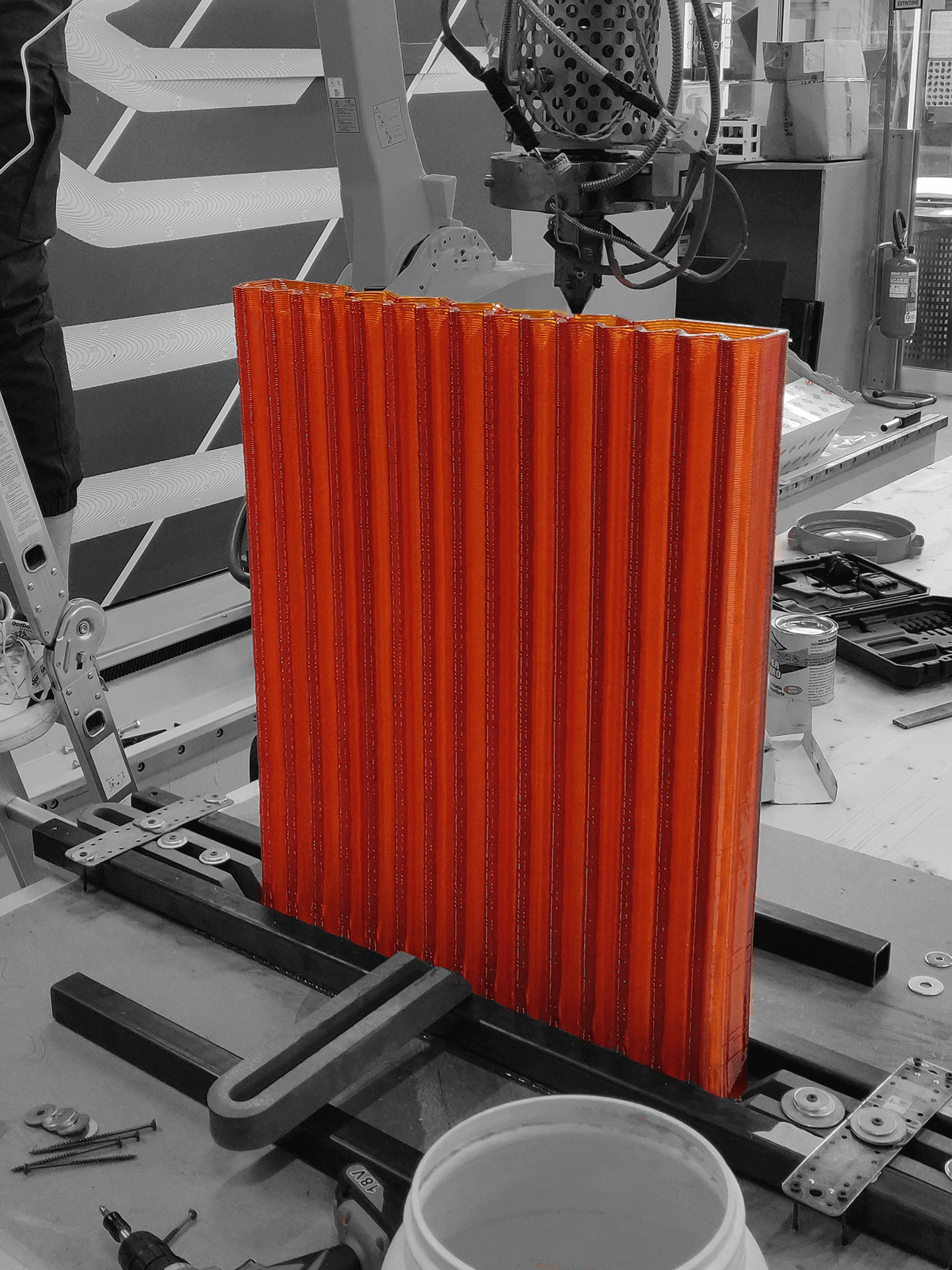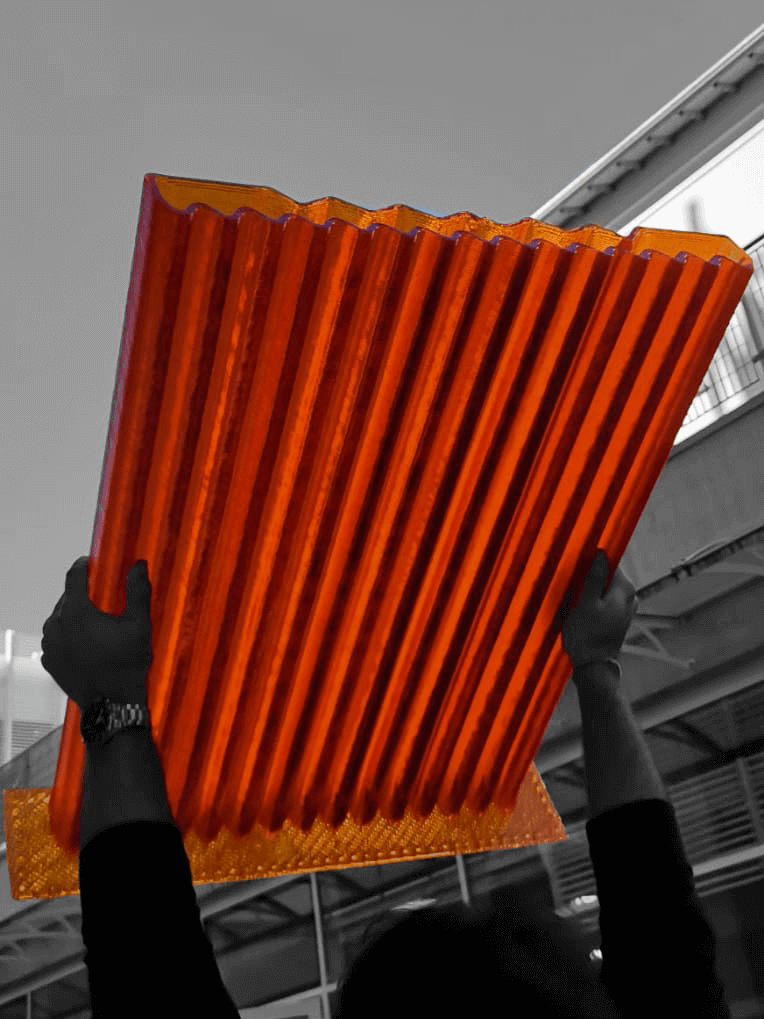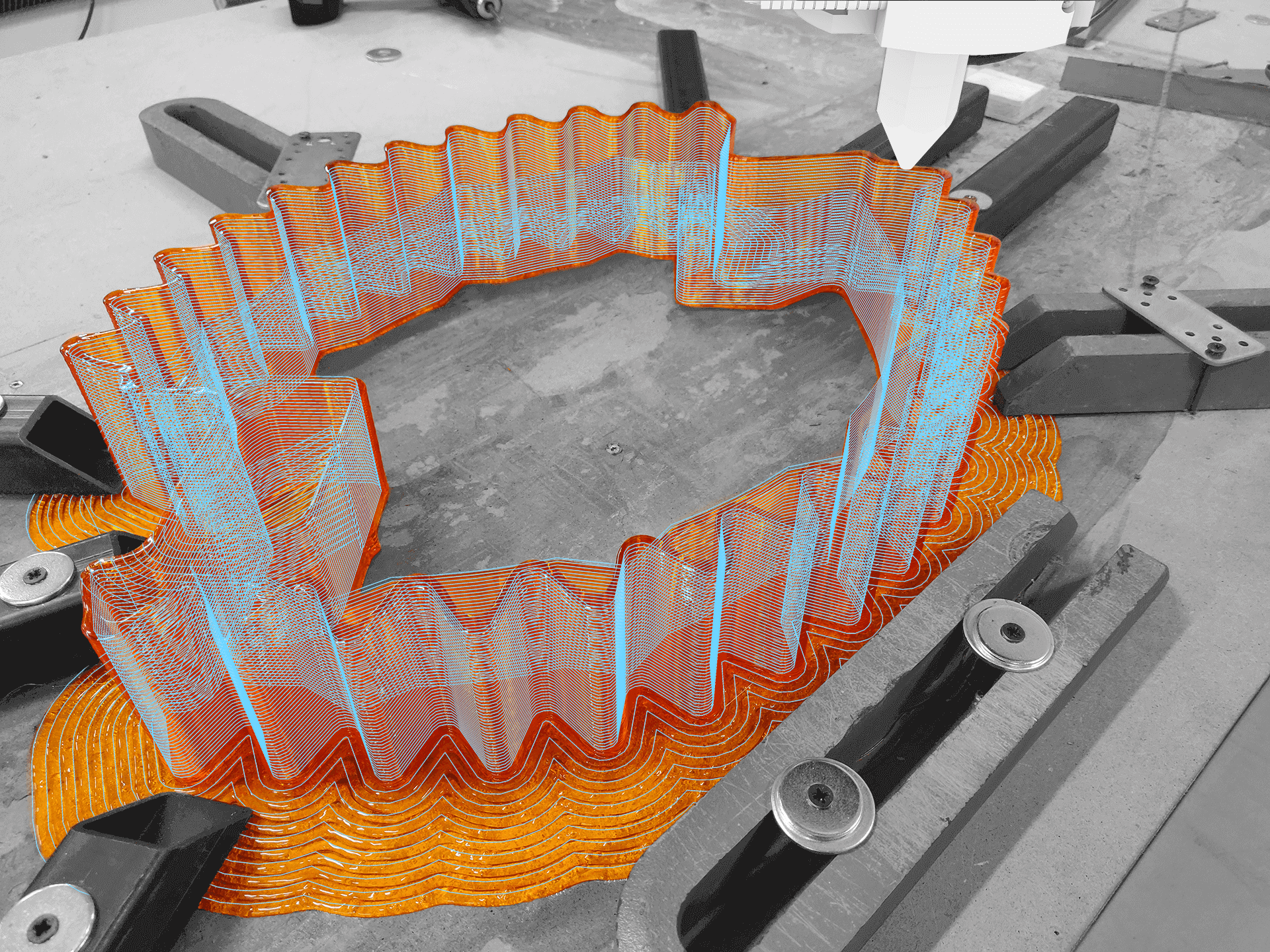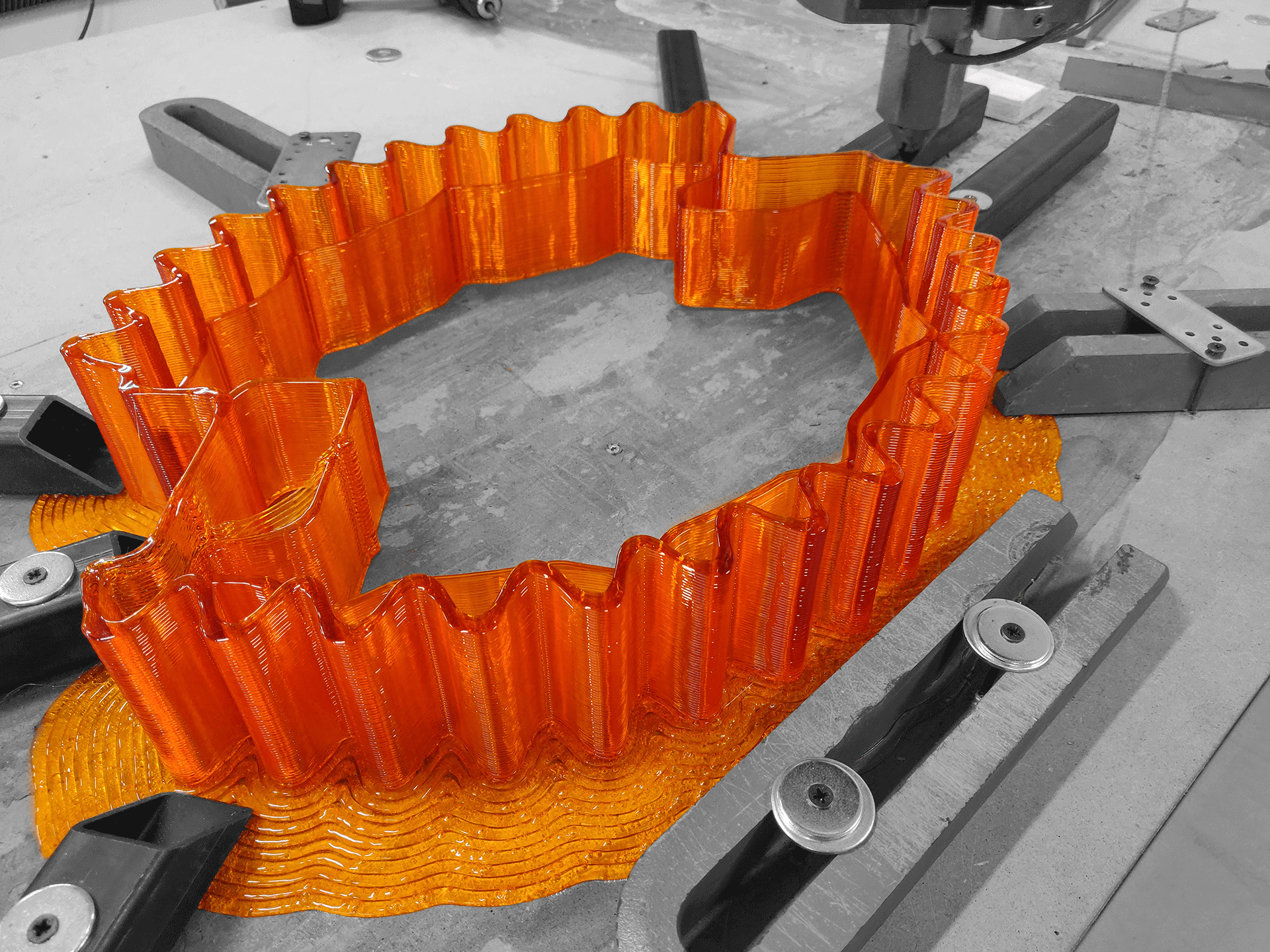Project Description
Lorepa is a modularly designed counter-front with a very specific orange color. The counter elements were manufactured through RAM (Robotic Additive Manufacturing) with state of the art extrusion technologies and robotic cells.
The end result was achieved by masterfully blending colored plastic pellets in a uniform mix. The robot speed, extrusion temperature and overall toolpath were tuned in order to highlight the interaction between the light and the printed surface.
The end result was achieved by masterfully blending colored plastic pellets in a uniform mix. The robot speed, extrusion temperature and overall toolpath were tuned in order to highlight the interaction between the light and the printed surface.
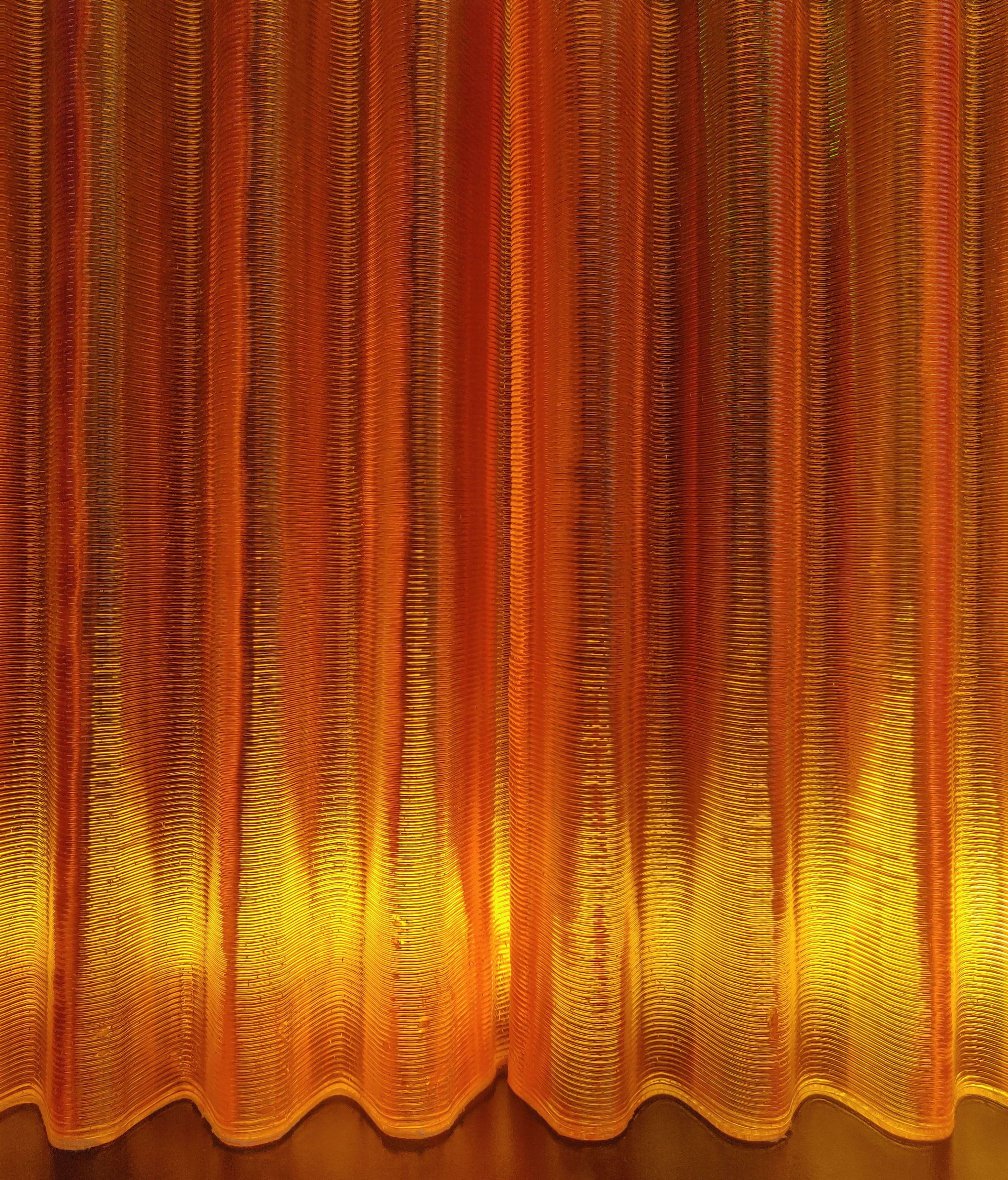
images courtesy of INDEXLAB
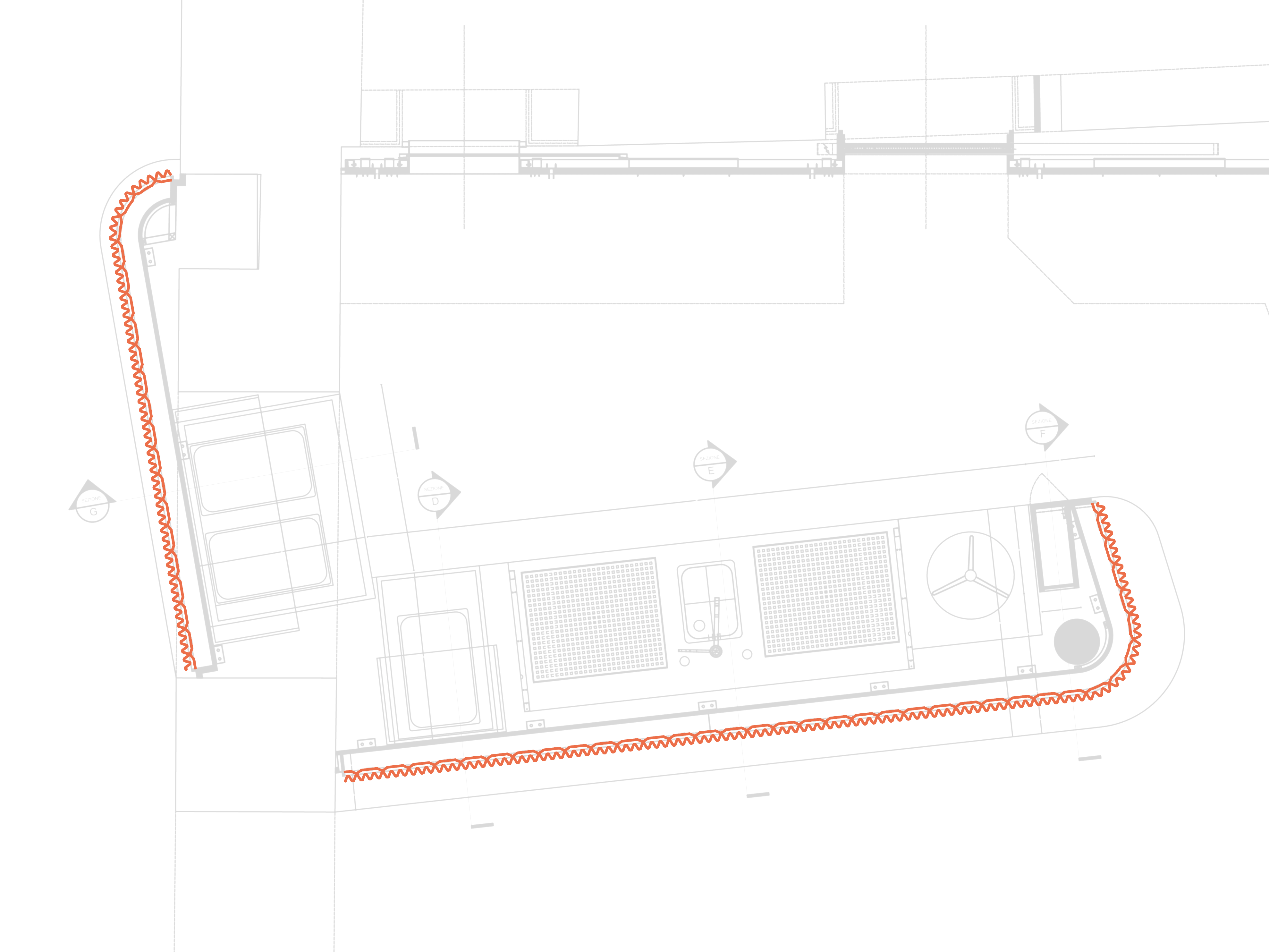
Counter Overview
The dominating pattern of the counter-front is a series of 356 waves that span the entire front counter and seamlessly wrap around the back. The shape was algorithmically generated in order to achieve a continuous printing path that would minimize resonance effects on the robotic cell and reduce the number total instructions per file. The overall shape was rebuilt multiple times in order to comply with the architectural design as the project of the counter-front advanced.
Panel 3D Printing
The panels were printed in sets of two in order to optimize the manufacturing process and reduce printing times and material waste. The printing toolpath was designed to avoid sharp turns and direction changes that could generate surface artifacts due to temperature buildup and ringing. Before and during the printing process the polymer was dehumidified in order to maintain its mechanical properties and ensure its characteristic transparency. Mechanical clamps were used to lock in place the prints and reduce the warping, typical of polycarbonate 3D printing.
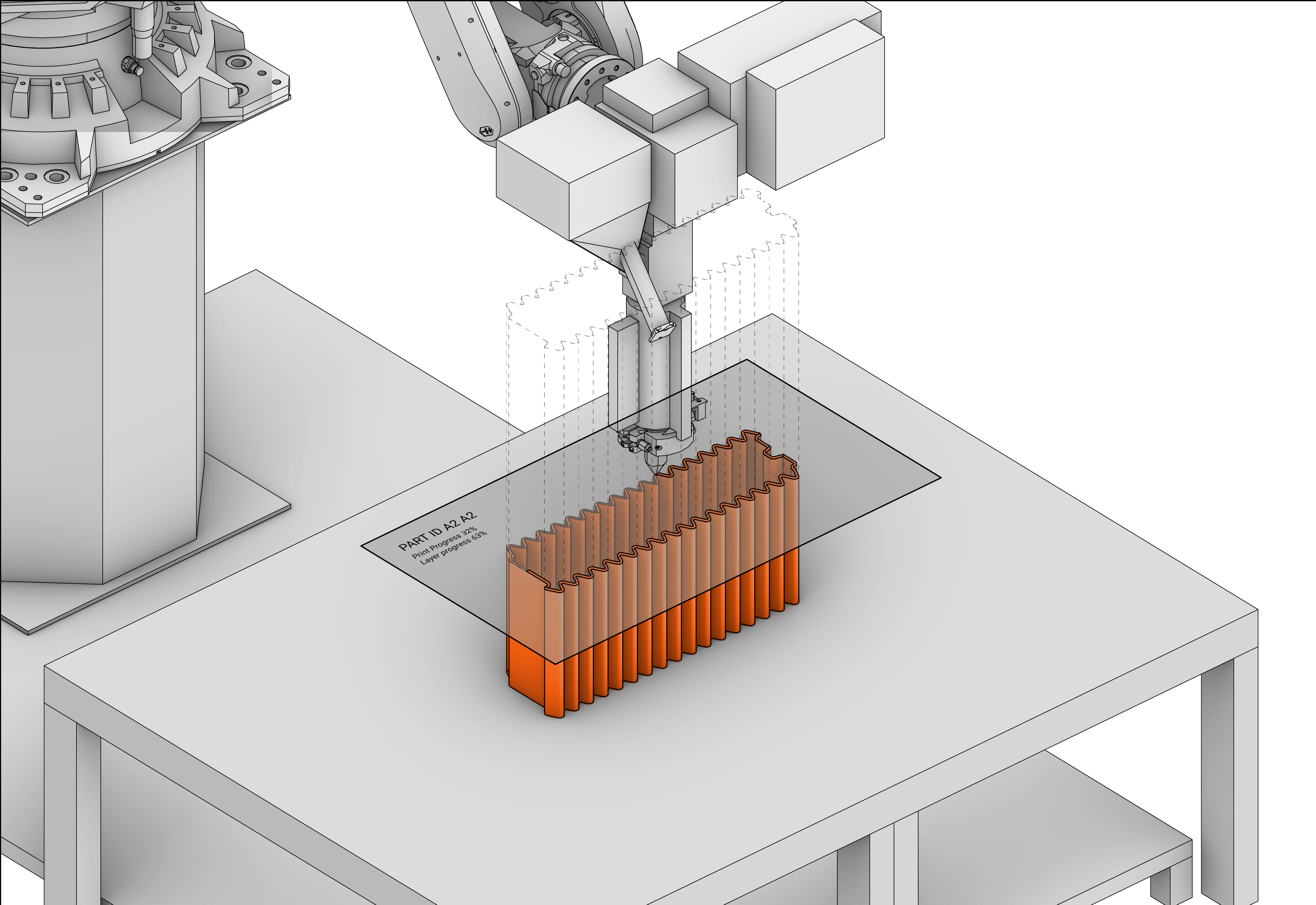
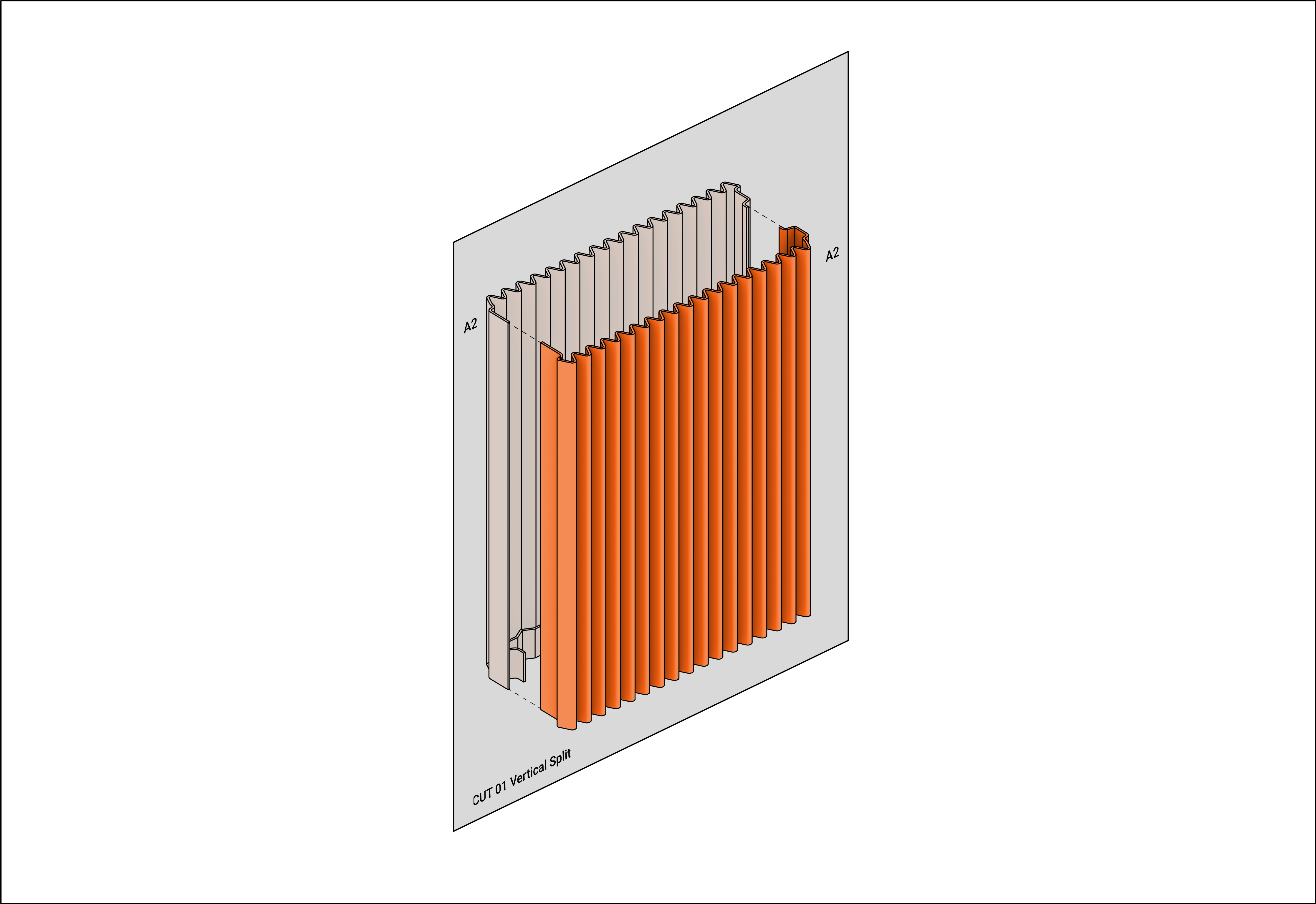
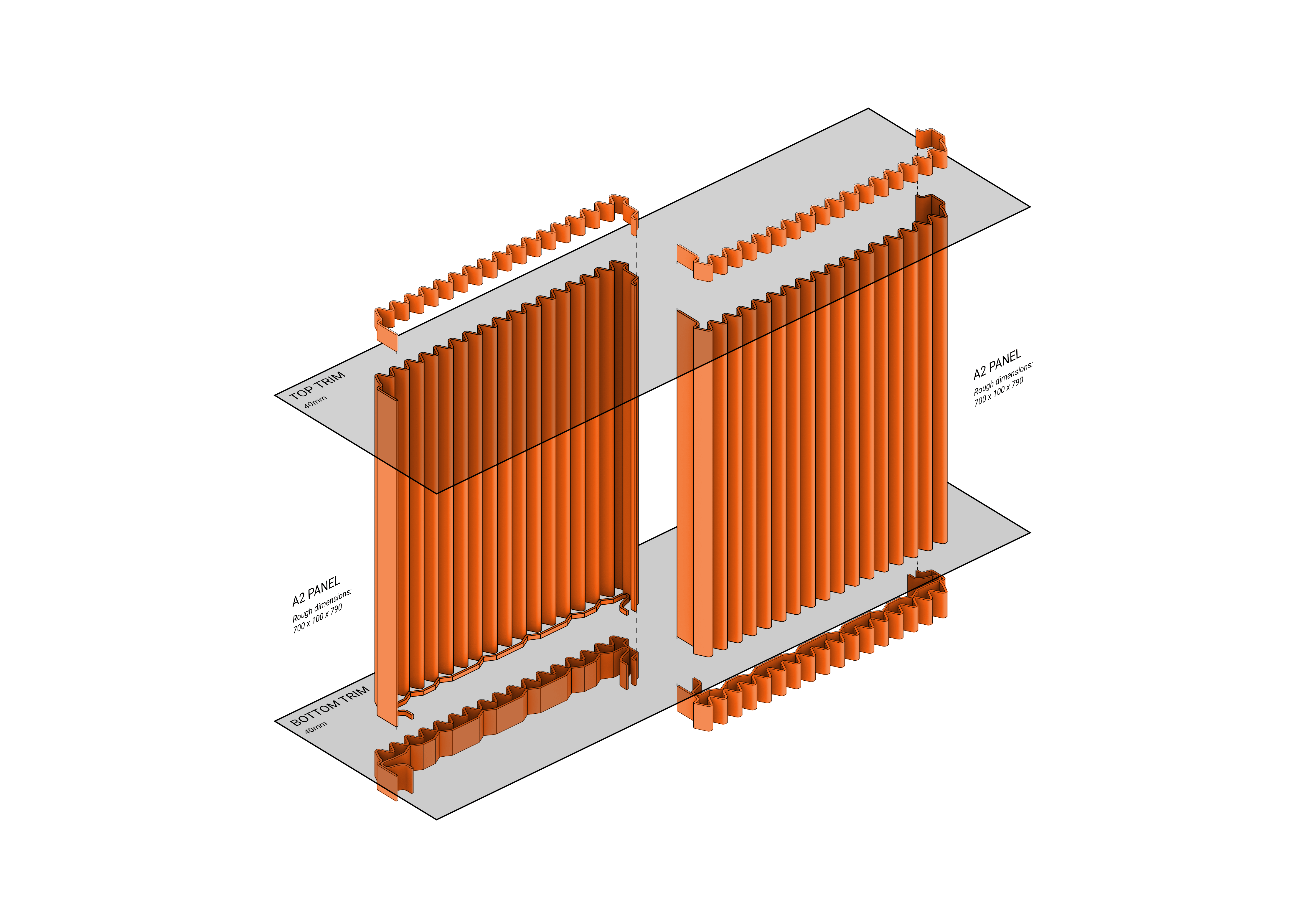
Manufacturing Process
The eleven panels that compose the counter-front were grouped and connected together to form a single outline shell. This solution allowed to reduce the printing time and material costs in half, removing the panel’s backplate and utilizing each side as a complete element.After the RAM process the panels were vertically split generating two shells and subsequently trimmed vertically in order to meet the maximum depth requirements for the assembly. In the same way the top and bottom portions were also trimmed to remove unwanted warping artifacts typical of the first layers.
